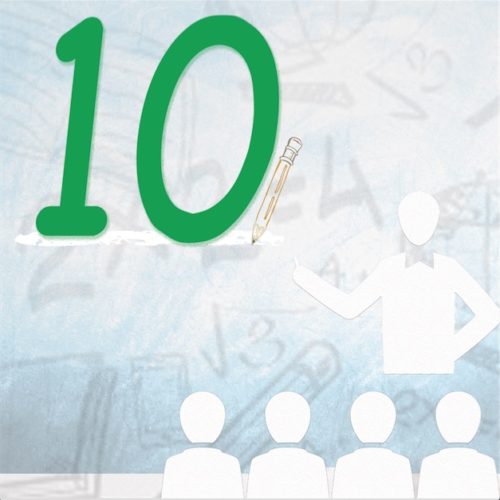The Best of Teachers Teaching!
(9th) Nine Data Dancing
(8th) Charter Schools Leading
(7th) Opportunity Scholars Expanding
(6th) Parent Power Growing
(5th) State Policy Changing
(4th) Reformie Ladies Lunching
(3rd) A Global Hub for Technology
(2nd) Model Legislation
And a Nominee for Opportunity!
The 10th in our 12-ish days of Christmas series, intended to bring gifts to education reformers everywhere!
by Dave Saba
What a great statement from Texas Serenity Academy about teachers they received from the Teachers of Tomorrow alternative certification program. There are over 3.5 million teachers in schools today and many are doing an incredible job teaching America’s students. They challenge their students to learn while at the same time meeting the growing bureaucratic needs of an ever-expanding central office.
But PISA scores show that we must do better. We are too good to be 15th in reading, 35th in math and 18th in science.
Teachers have the greatest impact on student learning and yet our teaching pipeline is dry. Over the past 10 years the number of students selecting education as their major has dropped from 9.9 percent to 4.2 percent. Right now there are 116,000 openings in schools and it is only getting worse.
Some argue that there isn’t a teacher shortage and we have produced the right number of teachers. They argue that the problem is that too many are just not teaching, or don’t teach the right subjects or don’t want to teach in the right geography and they would be correct. They say we need to keep more great teachers in the classroom and they are right. But if you are the HR person tasked with putting











 (Originally posted to the National Journal‘s
(Originally posted to the National Journal‘s  Wasn’t 2010 supposed to be the Year of Education Reform? ‘Race to the Top’ was going to transform the education landscape, ‘No Child Left Behind’ was to get a facelift, school turnaround options were going to transform our lowest achieving public schools…
Wasn’t 2010 supposed to be the Year of Education Reform? ‘Race to the Top’ was going to transform the education landscape, ‘No Child Left Behind’ was to get a facelift, school turnaround options were going to transform our lowest achieving public schools… Four things you are guaranteed not to hear in Wednesday night’s SOTU:
Four things you are guaranteed not to hear in Wednesday night’s SOTU: (This post
(This post  1) The new paternalism
1) The new paternalism D.C. Schools Chancellor Michelle Rhee seems to be dominating the media these days, and she’s making headlines again this week,
D.C. Schools Chancellor Michelle Rhee seems to be dominating the media these days, and she’s making headlines again this week, 
